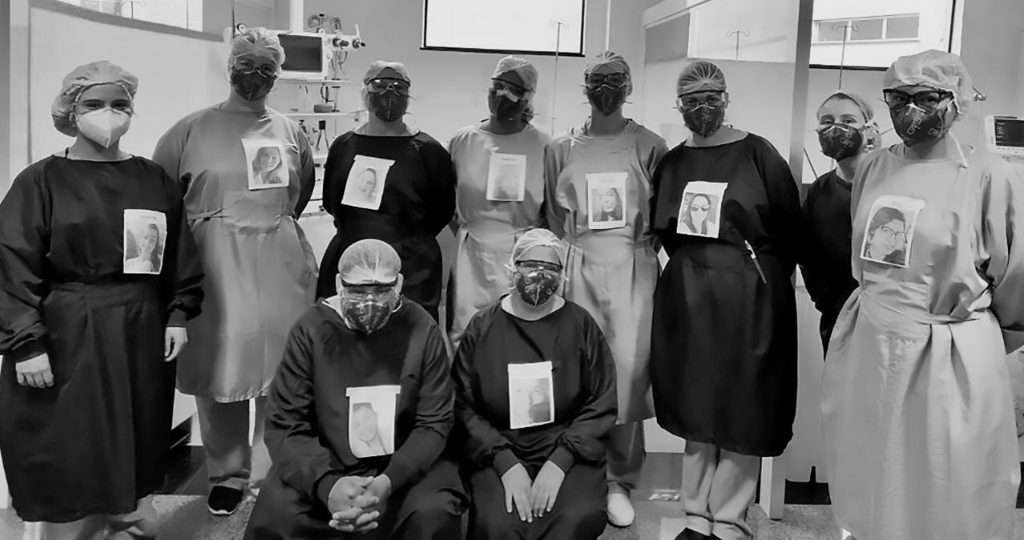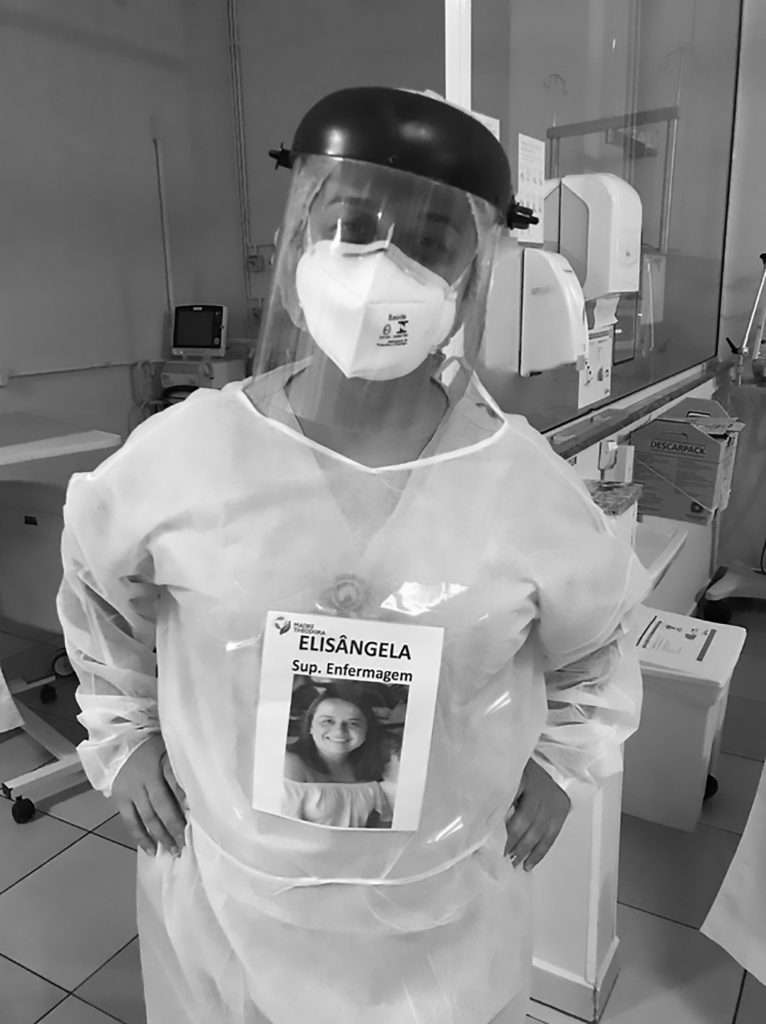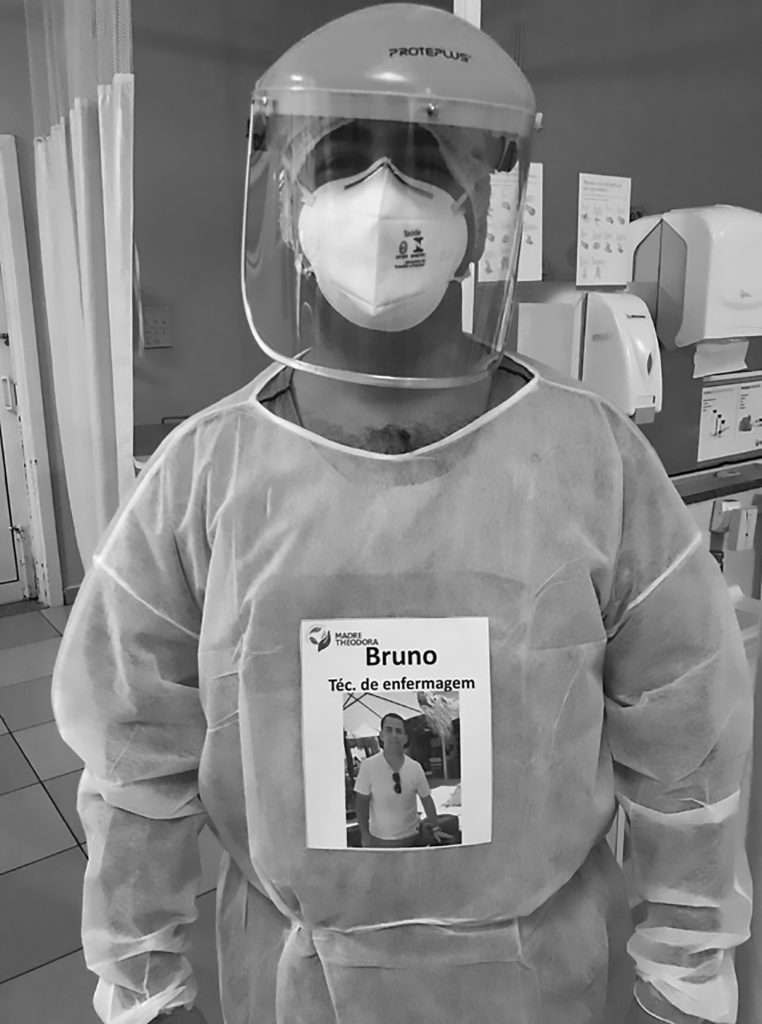These intensive care medics have stuck photos of themselves to their chests while they work so the coronavirus patients they are treating can see smiling faces.
Studies have shown that smiling is connected with a reduction in blood pressure, pain, and stress, while increasing endurance, boosting the immune system and helping people’s moods.
The medical staff work in the intensive care unit (ICU) at the Hospital do Trabalhador in the city of Curitiba in the southern Brazilian state of Parana and decided to use the photos after some patients said they were missing a smile.

In the images, the team can be seen in full protective gear with their photos stuck to their gowns.
Kessler Koetzler, who co-ordinates the unit’s nursing team, told local media: “Some of the patients had said that they couldn’t recognise them whilst others said that they felt they were missing a smile.
“It’s a way of creating a calmer feeling in the treatment of the patients.”
Workers at the Madre Theodora Hospital in the city of Campinas in the southeastern Brazilian state of Sao Paulo also created a similar initiative.
The doctors and nurses in the hospital are all using the photos to make the treatment they provide feel more human. The hospital’s director Jose Emilio Bueno told reporters: “The patients feel welcomed. Nobody wants to be treated by a robot, and of the (protective) equipment gets rid of facial expressions and human contact from the connection.”
The hospital worked with other initiatives to make the care feel more homely such as music therapy and interaction with animals, but these had to stop to prevent the risk of contamination and Bueno said: “We were quite restless without these activities when the team showed me the initiative of an American doctor. In four hours we had some tags ready.”

The hospital staff is wearing pictures of themselves in hospital Madre Theodora 
The hospital staff is wearing pictures of themselves in hospital Madre Theodora
The initiative began with the ‘Share Your Smile’ idea in the United States and doctor Marcelo Fortuna, who works at the Madre Theodora Hospital said: “Since a week ago, when we started using these photos, the patients haven’t had that initial fright of having a completely covered person, who they do not know who it is.
“This has made the patients see that, behind all the equipment, there is a person like them. With their family at home waiting for them.”
Two studies conducted at the Uppsala University in Sweden found that people being shown photos of others smiling replicated the smile and had to make a conscious effort to be able to frown when asked to do so, making smiles “contagious”.
Smiling releases neuropeptides that help fight off stress. These are molecules that enable neurons to exchange information. Neurotransmitters that make people feel good, such as dopamine, endorphins and serotonin are released when people see a smile. This in turn relaxes the person’s body and can, for instance, lower their heart rate and blood pressure.
To find out more about the author, editor or agency that supplied this story – please click below.
Story By: Alex Cope, Sub-Editor: Joseph Golder, Agency: Newsflash
The Ananova page is created by and dedicated to professional, independent freelance journalists. It is a place for us to showcase our work. When our news is sold to our media partners, we will include the link here.




